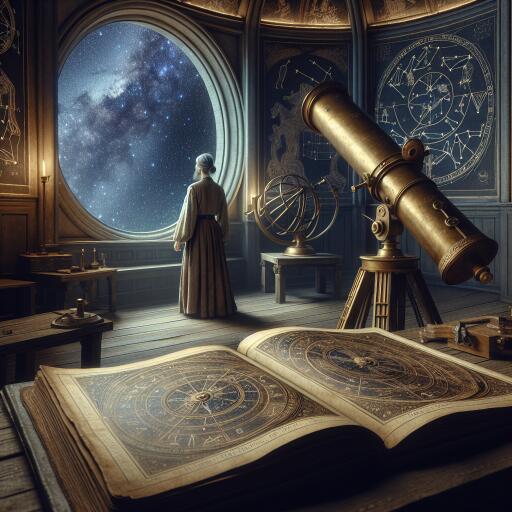Exploring the Influence of Asteroids in Astrology: Unveiling the Mysteries of Ceres, Juno, Pallas, and Vesta
Astrology has long been a fascinating subject for many, offering insights into personality traits, life events, and even future predictions based on the positions of celestial bodies at the time of one’s birth. While most people are familiar with the basic components of astrology, such as the twelve zodiac signs and the planets, there’s a less explored area that’s gaining attention for its profound influence in astrological charts: the role of asteroids. Particularly, the four major asteroids – Ceres, Juno, Pallas, and Vesta – add depth and nuance to astrological readings, revealing aspects of our personality and life journey that are often overlooked.
Introduction to Asteroids in Astrology
In the vast expanse of our solar system, millions of asteroids orbit the sun, with the majority found in the asteroid belt between Mars and Jupiter. Among these, Ceres, Juno, Pallas, and Vesta are considered significant in astrological practices due to their size and the mythological personas they carry. These celestial bodies were all discovered in the early 19th century and were initially classified as planets. However, as more objects were identified in the same region, they were downgraded to asteroids. Despite this, their influence in astrology remains strong, offering a bridge between the personal planets (Mercury through Mars) and the societal planets (Jupiter and Saturn).
Ceres: The Nurturer
Ceres was the first asteroid discovered and is the largest in the asteroid belt. It is named after the Roman goddess of agriculture and is symbolically associated with nurturing, motherhood, and caregiving. In an astrological chart, the position of Ceres can indicate how we give and receive care, our relationships with food and body image, and our connection to motherhood and fertility. A well-aspected Ceres offers insights into areas of life that provide comfort and sustenance, shedding light on our capacity for self-care and nurturing others.
Juno: The Partner
Juno, named after the Roman goddess of marriage, represents the aspect of partnership and contracts in astrology. It elucidates the dynamics of our most committed relationships, not just in marriage but also in business partnerships and long-term contracts. Juno’s placement in the natal chart can reveal our needs and preferences in partnerships, the type of partner we’re attracted to, and potential challenges we may face in long-term commitments. It helps in understanding the balance of power and the interplay of support within our partnerships.
Pallas: The Warrior
Named after Pallas Athena, the Greek goddess of wisdom, warfare, and strategy, Pallas represents the intellect and the ability to devise strategies. In a natal chart, Pallas’ position hints at our approach to solving problems, our creative intelligence, and how we express our unique brand of wisdom. It also relates to our capacity for healing, activism, and championing causes, showing how we can harness our intellect not just for personal gain but for the wider good.
Vesta: The Keeper of the Flame
Vesta is named after the virgin goddess of hearth and home from Roman mythology. In astrology, Vesta signifies our devotion, what we hold sacred, and how we focus our energy. Its placement in a chart informs us about our attitudes towards home, our sexuality and celibacy, and where we find comfort and healing. Vesta’s influence is subtle yet profound, highlighting the areas of life where we are most disciplined and where we dedicate our most focused efforts.
Integrating the Asteroids into Astrological Practice
To incorporate the asteroids into astrological readings, one must first locate their positions in the natal chart, available through various astrology software programs and websites. The sign the asteroid occupies reveals how its qualities manifest, while the house placement indicates the area of life affected. Furthermore, aspects formed with planets or points in the chart can modify their expression, enhancing or challenging their basic qualities.
Relevance of Asteroids Today
In contemporary astrology, asteroids add dimension and depth to chart interpretations, enabling a more nuanced understanding of the chart holder’s personality and life path. They complement the traditional planets, offering additional insights especially in areas concerning personal development, relationships, and societal contributions.
For instance, someone with Ceres prominent in their chart might be involved in caregiving professions, while a strong Juno could indicate a deep commitment to partner relationships. Pallas’ influence might be seen in those who excel in strategic roles or advocacy, and Vesta could indicate a calling towards spiritual or healing professions.
Conclusion
The major asteroids in astrology, Ceres, Juno, Pallas, and Vesta, offer a rich layer of meaning to astrological interpretations, addressing aspects of our humanity that the planets and signs alone might miss. By integrating these celestial bodies into readings, astrologers can provide more comprehensive insights into an individual’s needs, talents, and life journey. As we continue to explore the influence of asteroids, we uncover more about the complex interplay of celestial forces that shape our lives, inviting us to look deeper into the mysteries of the cosmos and ourselves.


